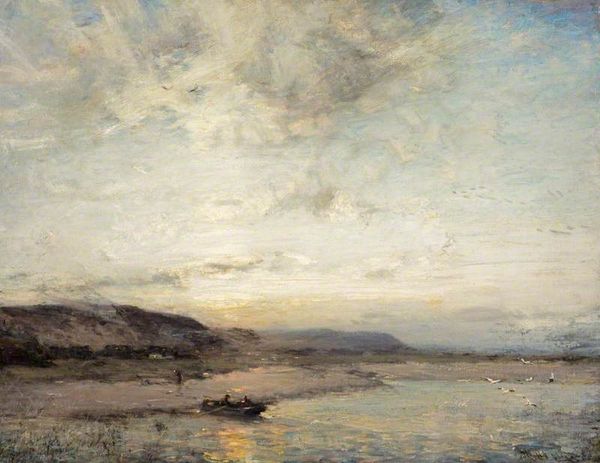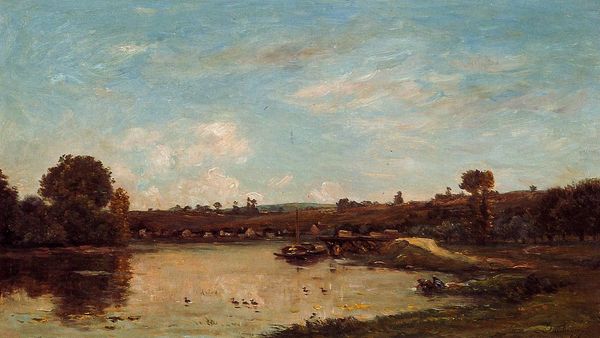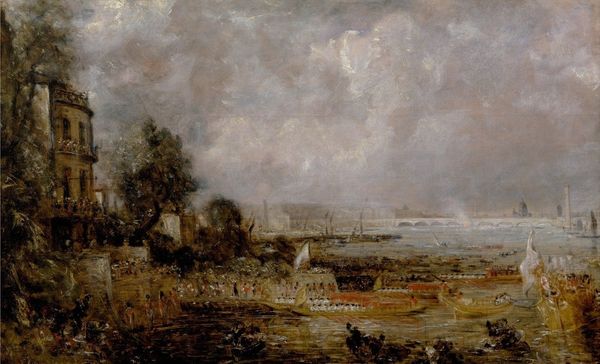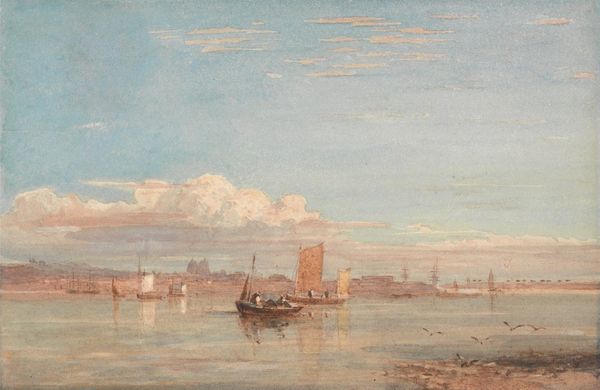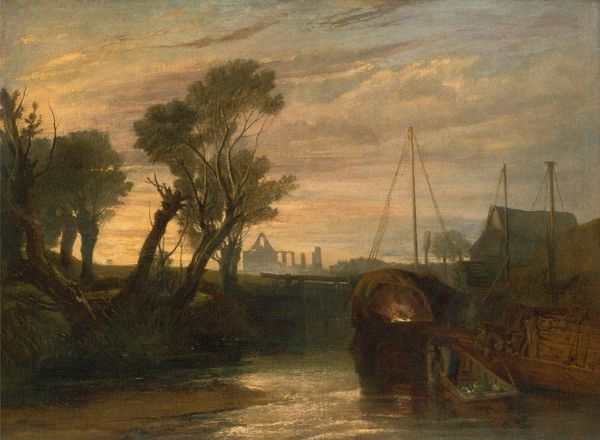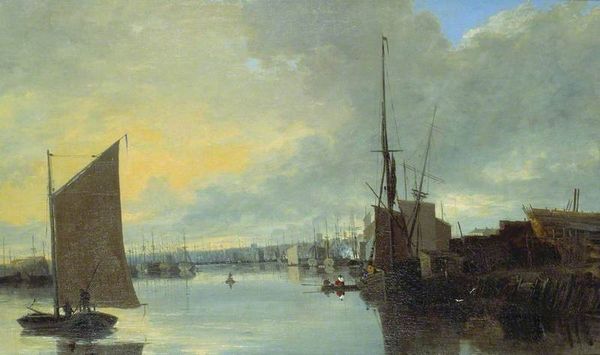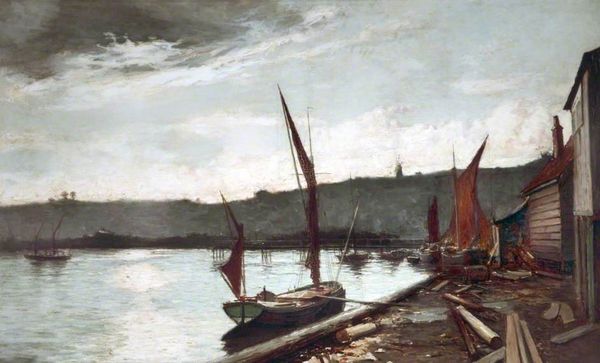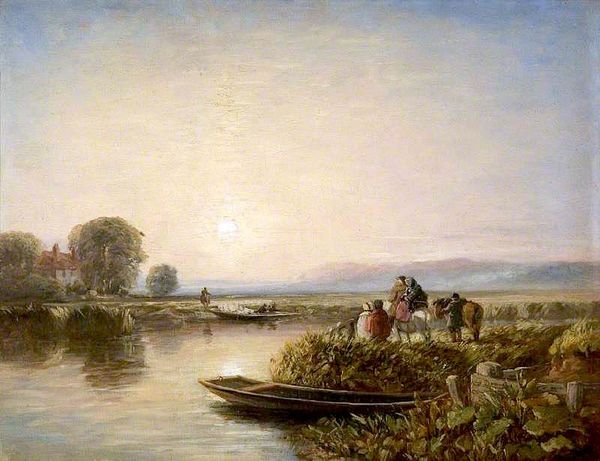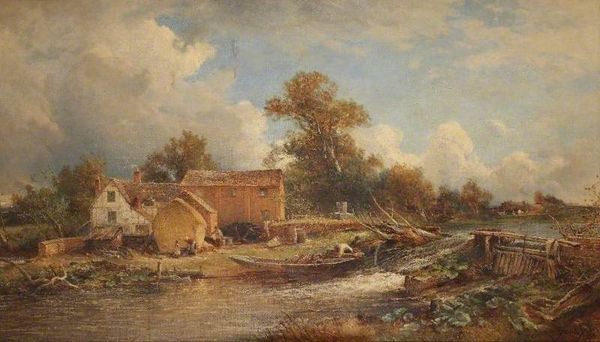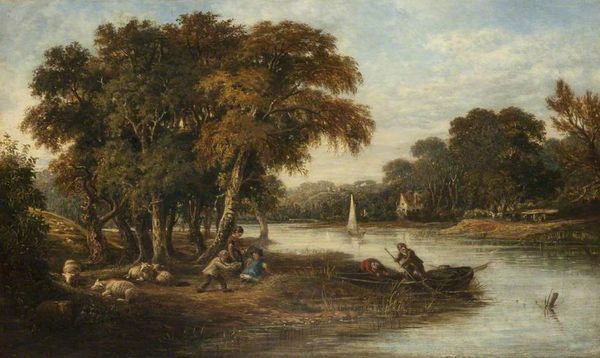
plein-air, oil-paint
#
impressionism
#
plein-air
#
oil-paint
#
landscape
#
impressionist landscape
#
oil painting
#
seascape
#
post-impressionism
Dimensions: 52.1 x 80 cm
Copyright: Public domain
Editor: This is Johan Barthold Jongkind’s “River Scene,” painted around 1880, rendered in oil. It feels quite muted; there’s a real focus on atmosphere, making me think about place and industry. What do you see when you look at it? Curator: Immediately, I think about the context of plein-air painting and its reliance on readily available materials. How would the increasing industrialization of paint production – new pigments, pre-mixed tubes – have changed the way Jongkind and his contemporaries approached their work? The materiality shifts our understanding from pure landscape to the working class making a living off of it. Editor: That’s a good point! I was stuck on the idea of "art for art’s sake", but now that you mention materials, I notice the thick impasto in the sky – could that indicate something about Jongkind’s process or even his access to certain kinds of paints? Curator: Precisely! Also, consider the support he's working on – is it canvas, board, something else? And how does that choice impact the final product and our interpretation? Were certain materials cheaper, therefore more easily attained for less privileged artists? Editor: I hadn’t considered the economic aspect of materials. How does Jongkind's work challenge, or maybe even reinforce, the boundaries between high art and everyday life given what was happening in society? Curator: It blurs the line. On one hand, it's a beautiful landscape, a commodity for consumption by the wealthy. But when we look at it from a materialist perspective, we also see the artist's labor, the boats and the people working. Editor: I'm starting to see art as not just an aesthetic object, but really a product of its time, shaped by both the artist’s hand and larger socio-economic forces. Curator: Exactly! Seeing art through the lens of materials and production reveals a much richer, more complex narrative.
Comments
No comments
Be the first to comment and join the conversation on the ultimate creative platform.
